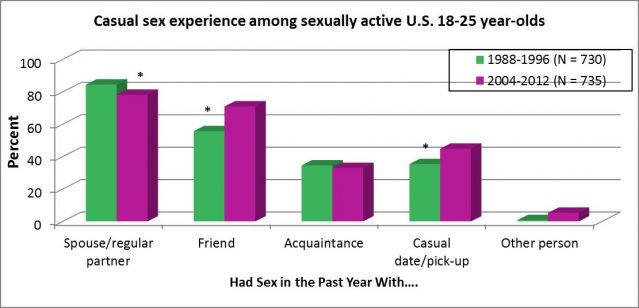The idea of holy matrimony once represented the peak of romance two people shared for each other; however, as societal standards have changed so have the traditions that were first established.
Marriage means a lot for some people. It’s the feeling of commitment—reciting those vows and knowing you can look at the person across from you and have no doubt in your mind this person will love you no matter what. Now while that’s all wonderful, besides religious reasoning, it doesn’t seem as if there’s any real purpose behind the idea of marriage in our modern society. It’s a possibility I feel this way because growing up I wasn’t told marriage is something I should strive for and make a priority. Not to say there’s anything wrong if that is a goal of a person, it’s just not what I put my focus toward.
As the population of the United States has been growing at an exponential rate, the number of marriages have not. The Centers for Disease Control and Prevention put out a study that showcases the trends of marriage and divorce in the United States from 2000 until 2014. We can see a small decline from the year 2000 (2.3 million marriages) to the year 2015 (2.2 million marriages), but an important thing to take note of is the rate of marriages dropping from 8.2 per 1,000 total population to 6.9. In 2000, the United States had a population of approximately 281 million people, but in 2015 the population grew to 321 million. That’s an extra 40 million people to account for, yet the number of marriages that have taken place has nearly remained the same.
There are a few reasons why this could be, and a fair amount of them are simply because the times are changing and there are different expectations than there were 40 years ago in the 1970s. Religions of the Christian faith, such as Catholicism where marriage has been cited to be a part of God’s plan for a means of reproduction, have declined by 7.8 percent from 2007 to 2014, according to the Pew Research Center. Also, unlike in the past, women aren’t needing to marry men anymore in order to make a life for themselves. LearnVest has reported that women aged 25 to 34 are 21 percent more likely to be college graduates and 48 percent more likely to hold a graduate degree. The workforce has also seen a reduce in the gender gap from 19 percent in 1990 to 12 percent in 2015. As a result of women becoming more educated and putting themselves in the workforce, they’re able to be socially and financially independent.
Another possible factor could have to do with the rise of casual encounters (or “hook-ups”) and how common it is to have multiple partners. Martin Monto and Anna Carey from the University of Portland created a study using data from the General Social Survey to find out what the relationship is between two people that have casual sex with each other.

(Psychology Today)
From the 1988-1996 era to the 2004-2012 era, there has been a drop from approximately 82 percent to 78 percent for casual sex amongst people with a spouse or regular partner. However, casual sex for a casual date or a pick up has gone up from 32 percent to 43.7 percent. Casual sex amongst people who claim to be “just friends” (another topic for another day) has risen from approximately 57.3 percent to 72 percent. If people don’t have to be in committed relationships anymore in order to get sex, and let’s be honest, people love sex, then it’s more than likely people won’t get into committed relationships, marriage included.
This isn’t to say marriage is wack, because for some people it means a lot, and I’m nobody to take that meaning away from them. If a marriage is well thought out and the people being wed are compatible with one another, then by all means, I wish you the best. However, I personally feel as if the concept of marriage is soon to be obsolete, whether it be at the end of the Millennial’s era or the era that comes after us.


